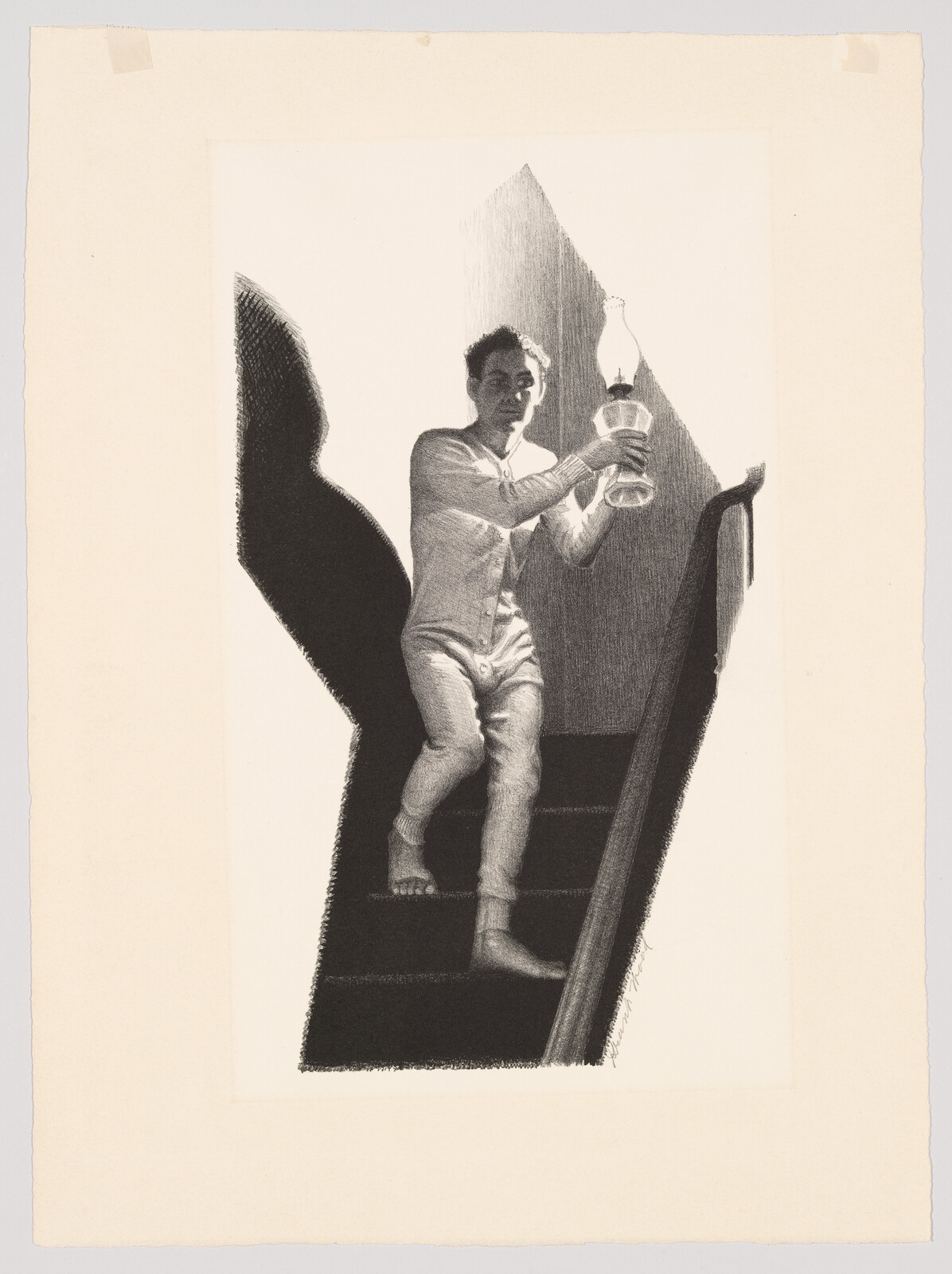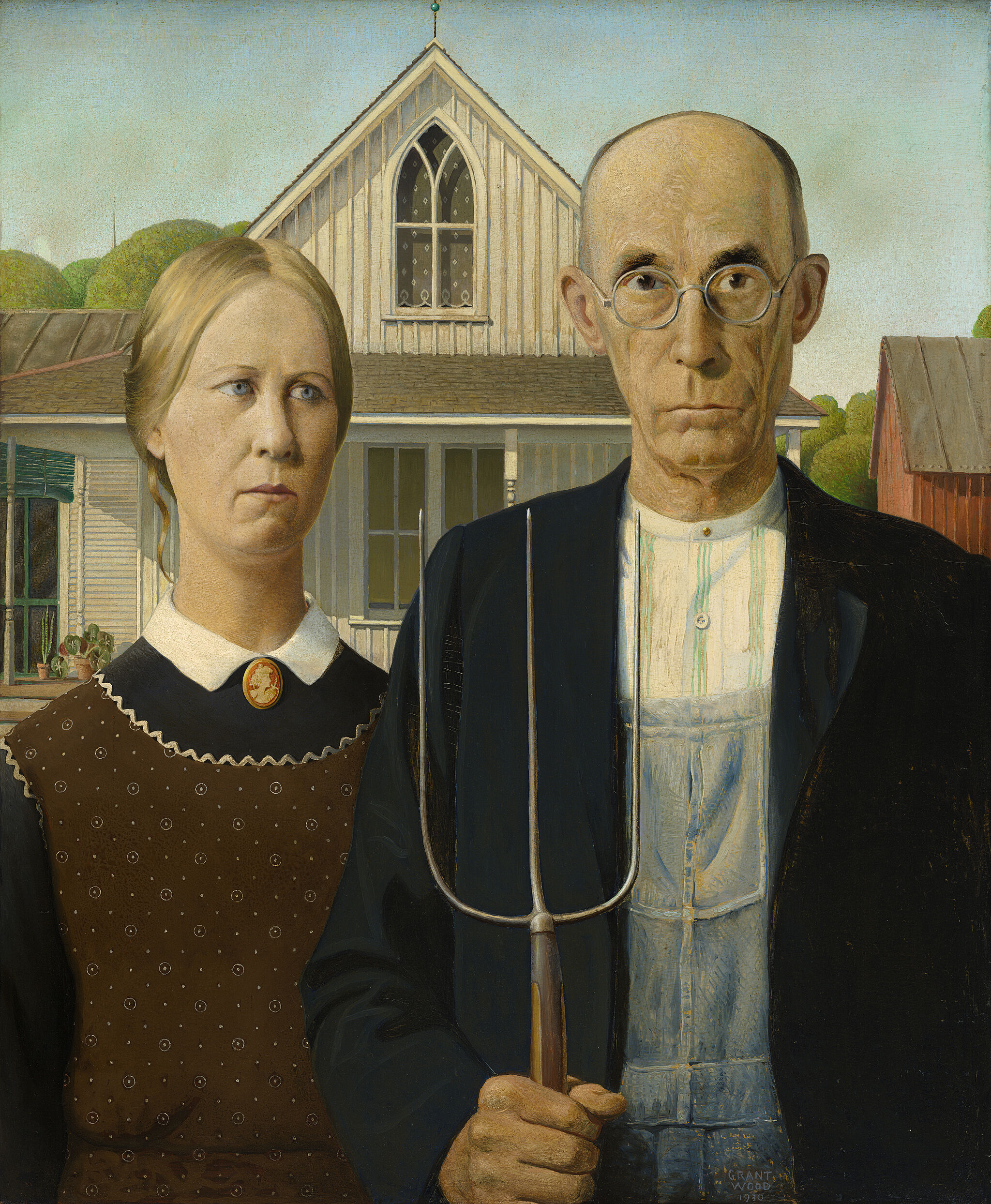Parson Weems’ Fable, 1939
Feb 16, 2018
0:00
Parson Weems’ Fable, 1939
0:00
Narrator: Wood called this painting Parson Weems’ Fable. Weems was an early biographer of George Washington. Here, he pulls back a curtain to reveal the action.
Glenn Adamson: Washington is shown in this extremely surreal manner, right in the center of the picture, holding an ax with a child's body, stockinged legs. But the head of the adult George Washington, not just any head, but a specific reference to Gilbert Stuart's portrait of Washington that appears on our one dollar bill.
Narrator: Glenn Adamson.
Glenn Adamson: So you have this strange composite figure, who is both young and old at the same time. Of course, he is in the act of confessing that he's chopped down the cherry tree. His father in the red coat is confronting him. So this is the famous scene, "Father, I cannot tell a lie. It was I that chopped down the cherry tree." Wood has given us this scene right in front of a house that is a dead on copy of Grant Wood's own house.
So what's going on here? Well, your guess is as good as mine in some ways. But certainly one thing we could say is that this is an imaginative journey for Wood back to his own childhood and his relationship to his father. Maybe it has something to do with Grant Wood's homosexuality, which was very much a closeted, secret sexual identity for him and something that he really struggled with in a very homophobic period of American history. I think of it in some ways as a very tragic painting. As an image of Grant Wood trying to come to terms with his own past and his present.


